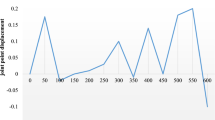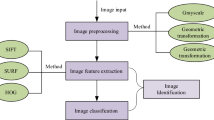Abstract
A research is designed to comprehensively study the dynamic trends and characteristics of dance movements recognition approaches, providing a valuable reference for the scientific research and development of dance art in China. Based on previous studies, a dance movements recognition model is proposed based on DL biological image visualization technology against the current problems in high-level dance movements. This model consists of the convolutional neural network (CNN)-based dance movements recognition algorithm that can recognize body movements, the dance movements recognition algorithm involving videos in the database, and the algorithm that analyzes image feature similarities of the dance movements. The Open Pose algorithm is adopted for human posture recognition. A high-precision human body pose movement state is finally obtained to judge the body changes of high-level dance movements through the division of human bones. Students with excellent dancing skills are invited to participate in the experiment, for whom specific dance movements are designed. The movement characteristics of bodies’ joint points are extracted and compared with standard movements demonstrated by teachers to obtain the differences between students’ movements and standard movements. The results review that the proposed dance movements recognition model based on biological video images has high accuracy. Within 6–8 s, the swing amplitude of the subjects’ left arm is quite different from the standard dance movements. The movements of the left arms, right arms, left legs, and right legs of experimental objects are quite different from the standard dance movements, which proves the model’s effectiveness. The results can provide a valuable reference for the research and development of dance in China and a practical basis for teaching dance movements.









Similar content being viewed by others
References
Yahya N, Musa H, Ong ZY et al (2019) Classification of motor functions from electroencephalogram (EEG) signals based on an integrated method comprised of common spatial pattern and wavelet transform framework. Sensors 19(22):4878–4883
Zbontar J, LeCun Y (2016) Stereo matching by training a CNN to compare image patches. J Mach Learn Res 17(1–32):2–14
Jin KH, McCann MT, Froustey E et al (2017) Deep CNN for inverse problems in imaging. IEEE Trans Image Process 26(9):4509–4522
Ovtcharov K, Ruwase O, Kim JY et al (2015) Accelerating deep CNNs using specialized hardware. Microsoft Research Whitepaper 2(11):1–4
Xiong H, Bairner A, Tang Z (2020) Embracing city life: physical activities and the social integration of the new generation of female migrant workers in urban China. Leis Stud 39(6):782–796
Poria S, Cambria E, Gelbukh A (2016) Aspect extraction for opinion mining with a deep CNN. Knowl-Based Syst 108:42–49
Chen J, Qiu J, Ahn CR et al (2017) Construction worker’s awkward posture recognition through supervised motion tensor decomposition. Autom Constr 77:67–81
Huang J, Yu X, Wang Y et al (2016) An integrated wireless wearable sensor system for posture recognition and indoor localization. Sensors 16(11):1825–1836
Kamala V R, MaryGladence L (2015) An optimal approach for social data analysis in Big Data. International Conference on Computation of Power, Energy, Information and Communication (ICCPEIC). IEEE, pp. 0205–0208.
Yan C, Coenen F, Zhang B et al (2016) Driving posture recognition by CNNs. IET Comput Vision 10(2):103–114
Nath S, Sinha S, Gladence L M, et al (2017) Health analysis of bicycle rider and security of bicycle using IoT. International Conference on Communication and Signal Processing (ICCSP). IEEE, pp. 0802–0806.
Gladence L M, Sivakumar H H, Venkatesan G, et al (2017) Home and office automation system using human activity recognition. International Conference on Communication and Signal Processing (ICCSP). IEEE, pp. 0758–0762.
Varol G, Laptev I, Schmid C et al (2018) Long-term temporal convolutions for action recognition. IEEE Trans Pattern Anal Mach Intell 40(6):1510–1517
Lv Z (2020) Virtual reality in the context of Internet of Things. Neural Comput Appl 32(13):9593–9602
Moeskops P, Viergever MA, Mendrik AM et al (2016) Automatic segmentation of MR brain images with a CNN. IEEE Trans Med Imaging 35(5):1252–1261
Anthimopoulos M, Christodoulidis S, Ebner L et al (2016) Lung pattern classification for interstitial lung diseases using a deep CNN. IEEE Trans Med Imaging 35(5):1207–1216
Shafiee A, Nag A, Muralimanohar N et al (2016) ISAAC: A CNN accelerator with in-situ analog arithmetic in crossbars. ACM SIGARCH Comput Arch News 44(3):14–26
Brumancia E, Samuel SJ, Gladence LM et al (2019) Hybrid data fusion model for restricted information using Dempster-Shafer and adaptive neuro-fuzzy inference (DSANFI) system. Soft Comput 23(8):2637–2644
Senduran C, Gunes K, Topaloglu D et al (2018) Mitigation and treatment of pollutants from railway and highway runoff by pocket wetland system. A case study Chemosphere 204:335–343
Yang B, Duan H, Wu S et al (2019) Damage tolerance assessment of a brake unit bracket for high-speed railway welded bogie frames. Chin J Mech Eng 32(1):58–64
Brisset S, Ogier M (2019) Collaborative and multilevel optimizations of a hybrid railway power substation. Int J Numer Model Electron Networks Devices Fields 32(4):e2289–e2296
Koziarski M, Cyganek B (2017) Image recognition with deep neural networks in presence of noise – Dealing with and taking advantage of distortions. Int Comput-aided Eng 24(4):337–349
Lin Z, Mu S, Shi A et al (2018) A novel method of maize leaf disease image identification based on a multichannel CNN. Trans ASABE 61(5):1461–1474
Okugawa Y, Kubo M, Sato H et al (2019) Evaluation for the synchronization of the parade with openpose. J Robotics, Netw Artif Life 24:162–166
Yoo HR, Lee BH (2019) An openpose-based child abuse decision system using surveillance video. J Korea Inst Inf Commun Eng 23(3):282–290
Tsai YS, Hsu LH, Hsieh YZ et al (2020) The real-time depth estimation for an occluded person based on a single image and openpose method. Mathematics 8(8):1333–1343
Draisma J, Horobeţ E, Ottaviani G et al (2016) The euclidean distance degree of an algebraic variety. Found Comput Math 16(1):99–149
Naevdal G (2019) Positive bases with maximal cosine measure. Optimization Lett 13(6):1381–1388
Davies P, Rowe M, Brown DM et al (2020) Understanding the status of evidence in policing research: reflections from a study of policing domestic abuse[J]. Policing Soc 31(6):1–15
Lepore W, Hall BL, Tandon R (2020) The Knowledge for Change Consortium: a decolonising approach to international collaboration in capacity-building in community-based participatory research. Can J Dev Studies/Revue canadienne d’études du développement. 42(3):1–24
Coelho YL, Salomao JM, Kulitz HR (2017) Intelligent hand posture recognition system integrated to process control. IEEE Lat Am Trans 15(6):1144–1153
Brünger J, Gentz M, Traulsen I et al (2020) Panoptic segmentation of individual pigs for posture recognition. Sensors 20(13):3710–3718
Wu Z, Zhang J, Chen K et al (2019) Yoga posture recognition and quantitative evaluation with wearable sensors based on two-stage classifier and prior Bayesian network. Sensors 19(23):5129–5136
Cai X, Gao Y, Li M et al (2016) Infrared human posture recognition method for monitoring in smart homes based on hidden Markov model. Sustainability 8(9):892–905
Fang L, Liang N, Kang W et al (2020) Real-time hand posture recognition using hand geometric features and Fisher Vector. Signal Proc: Image Commun 82:115729–115737
Cheng K, Ye N, Malekian R et al (2019) In-air gesture interaction: Real time hand posture recognition using passive RFID tags. IEEE Access 7:94460–94472
Vecchio A, Mulas F, Cola G (2017) Posture recognition using the interdistances between wearable devices. IEEE Sens lett 1(4):1–4
Acknowledgements
This research was supported by the project of 2020 Teaching Reform Research Project of Colleges and Universities in Hunan Province “Innovative Research on Training Mode of Outstanding Dance Talents in Application-Oriented Colleges and Universities under the Background of Professional Certification” (No.HNJG-2020-0789). It was also supported by the project of Key project of Yiyang Social Science Project in 2020 "Research on Nanxian Dihuagu Dance from the Perspective of Semiotics" (No. 2020YS092).
Author information
Authors and Affiliations
Corresponding author
Additional information
Publisher's Note
Springer Nature remains neutral with regard to jurisdictional claims in published maps and institutional affiliations.
Rights and permissions
About this article
Cite this article
Zhang, R. Analyzing body changes of high-level dance movements through biological image visualization technology by convolutional neural network. J Supercomput 78, 10521–10541 (2022). https://doi.org/10.1007/s11227-021-04298-y
Accepted:
Published:
Issue Date:
DOI: https://doi.org/10.1007/s11227-021-04298-y




